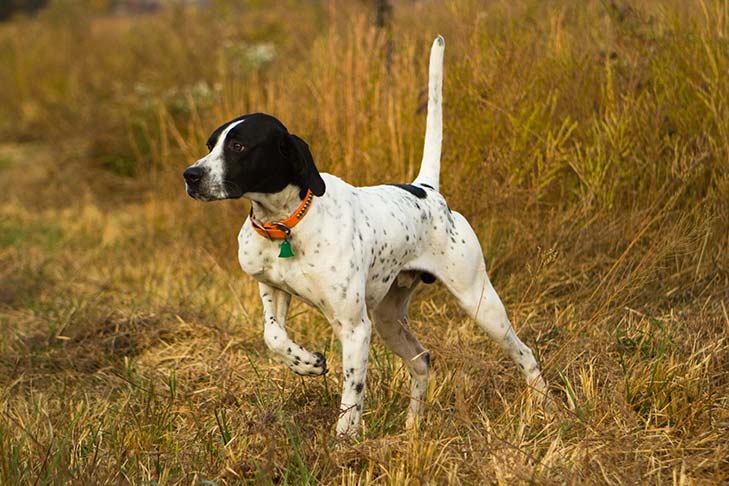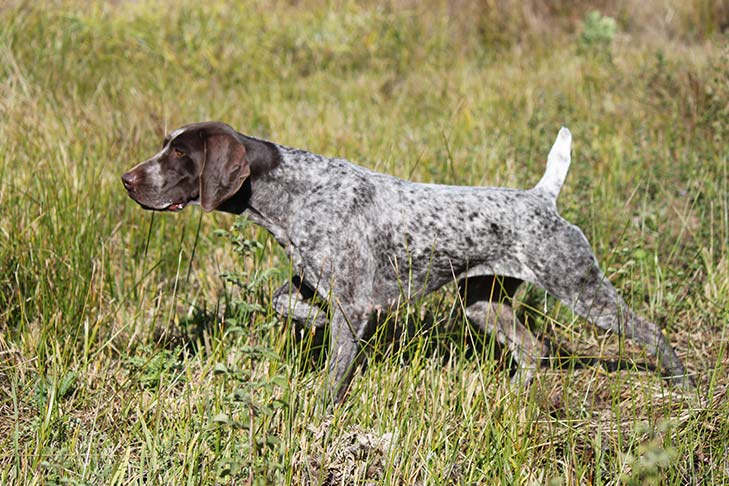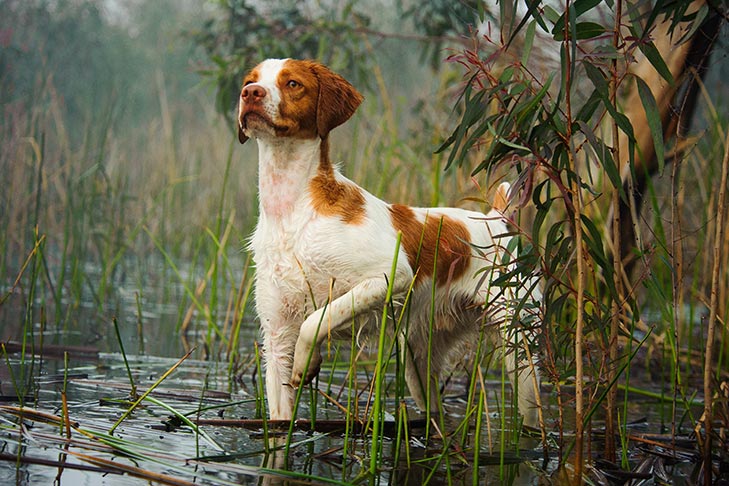
|
You’re out for a walk with your dog or perhaps just playing in the yard. Suddenly, the dog stops cold. Freezing in place, their nose straightens, their tail lifts out, and they stare intently in one direction. Almost robotically, one front foot lifts slightly off the ground and bends up in a point.
Graceful and precise, this stance isn’t accidental. Why do dogs seem to mimic statues?
In fact, pointing is a longtime instinct. Hunting dogs purposely-bred for generations used the tactic to help owners hunt game and put food on the table.
Pointing The Way
Although you may not need your dog to find meals, he might strike a pose with a paw folded and suspended in air if he senses something moving.
“If he’s a Pointer, he’s picking up a scent and raising one foot to point in the direction he smells prey,” says Diane Townsend, president of the American Pointer Club. “There’s nothing more natural in this breed than to point.”
When dogs position themselves like this, they’re alerting the owner that a bird or small game is close. By sniffing the air, the dog detects the animal’s scent drifting on wind currents.
Other AKC pointing breeds specifically bred and trained for hunting for generations in Europe or Great Britain will hold the same point position. These include, among others:
All Senses On Alert

Pointing breeds aren’t the only dogs who stop in their tracks and lift a paw when they see a bird, squirrel, or rabbit. Other breeds or mixed-breeds who are driven by a need to spot moving objects often show a variation on the traditional point.
Some dogs freeze in place without lifting his paw, nose, or tail. Others might lock their eyes on a small animal before chasing, capturing, or breaking the prey’s neck to kill it.
Where does this courageous and high-spirited trait come from? A possible reason is that some ancestor in the dog’s heritage was a pointing breed.
“Dogs are known for stopping, pouncing, and eating their prey, but what’s different about a specific hunting breed is its ability to work as a partner with their owner,” says Sharon Fitzpatrick, president of the German Shorthaired Pointer Club of America. “Pointing breeds can search for upland game birds or small prey away from their handler, yet follow instructions when the handler arrives.”
Usually independent thinkers able to find the solution to a problem, pointing breeds work in all types of terrain and weather. According to Townshend, they can be capable of pointing at just 2 months old without ever having to be taught.
Piper, a 4-year-old Vizsla owned by Lynn Brelie-Garel, points and stalks anything that moves.
“She began pointing when she was nearly a year old,” Brelie-Garel says. “Today she’ll stare at lizards, bunnies, and birds. Piper isn’t picky.”
Squirrels drive Sandra Smythe’s 2-year-old Dalmatian, Poppy, bonkers.
“When she’s inside the house, Poppy stands at the sliding glass door and looks in the yard,” says the St. Paul, Minnesota, resident. “If she sees a squirrel, she tears through the doggy door and runs full-speed after it.”
Hunt Tests
For owners who want to pursue an AKC Master Hunter or Field Trial title with their dogs, some training is required. Many dogs can earn a Junior Hunter title without much training, but advanced skills for hunt tests usually need some sharpening.

Every dog has its own pointing position characteristics. However, handlers must learn how to read a dog’s body language to understand what the dog is communicating.
“If the tail is moving, this might mean the bird is moving,” says Fitzpatrick. “Or, the exact position of the head, whether up or slightly down, can indicate how far the bird might be. Pointing breeds also know the difference between a songbird or a game bird, which helps if the hunter is looking for food.”
Need some help training your dog? While you may not be able to attend in-person training classes during COVID-19, we are here to help you virtually through AKC GoodDog! Helpline. This live telephone service connects you with a professional trainer who will offer unlimited, individualized advice on everything from behavioral issues to CGC prep to getting started in dog sports.

